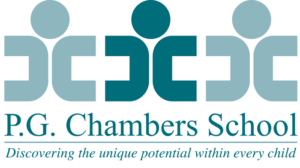For P.G. Chambers School, fall doesn’t mean ‘back to school’ in the traditional sense. Our students attend school year round with breaks before summer session in June and again at the end of August. Somehow though, September still seems to mark a fresh start. This fall, there are firsts for many families—the first time a parent has returned to work in the office, or had in-person doctor and therapy appointments, and for some students, this fall is the first time they have returned to in-person learning in 18 months!
I recently sat down with P.G. Chambers School social worker, Allison Marcus, MSW, LCSW, to discuss ways in which we can help students with special needs transition to the new school year. Allison shared a few strategies for helping students adjust to the classroom:
- Establish routine and consistency
Be sure that students attend school regularly and that they are aware of their expectations. Parents can help their child practice new schedules, focusing on morning and evening routines throughout the year.
- Provide emotional support
Encourage students to identify how they are feeling. Strategies such as using visual cues, zones of regulation, and “I statements” can help students validate their emotions.
- Read social stories
Using social stories can help explain difficult or unfamiliar situations such as the need to wear a mask, as well as establish morning and evening routines. Sample social stories are available online at teacherspayteachers.com or andnextcomesl.com
- Employ calming techniques
Deep breathing, family dance parties, blowing bubbles, stretching, and practicing mindful moments can help children unwind after a long day.
Students are not the only ones who may need assistance with the transition back to school. Reading Rockets shared some great tips for parents of children with special needs:
- Organize your paperwork
In the world of special education, there are many meetings, paperwork, and documentation to organize. A family calendar of school events, special education meetings, and conferences can be helpful to stay on track. Setting up a binder or folder to keep your child’s special education documentation, meeting notices, and IEPs in sequential order can also help stay organized.
- Start a communication log
Keeping track of all phone calls, e-mails, notes home, and meetings is important. Create a communication log for yourself in a notebook that is easily accessible. Be sure to note the dates, times, subject matter for each entry.
- Review your child’s IEP
The IEP is the cornerstone of your child’s educational program, so it’s important that you have a clear understanding of it. Be sure that this IEP still “fits” your child’s needs! If you’re unsure, contact your child’s case manager about holding an IEP review meeting.
- Stay up-to-date on special education news
Being knowledgeable about your child’s IEP and their disability can help you become a better advocate for your child. Try to keep up-to-date on new special education legislation, news, and events. The more you know, the more prepared you will be to navigate the world of special education and successfully advocate for your child. SPAN Parent Advocacy Network is a great resource for keeping on top of things.
For families of children with special needs, the return to school can be a wonderful but also challenging transition. Following these strategies can alleviate some of the stress and anxiety associated with changes in routine.
For more information, please contact Allison Marcus at marcusa@chambersschool.org.



